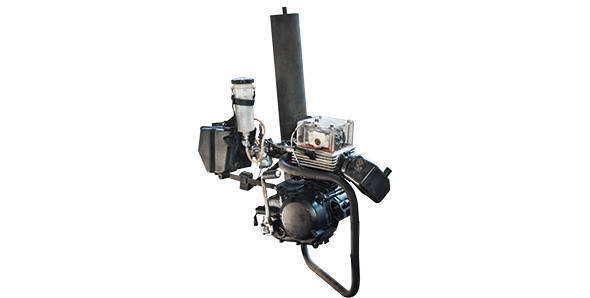The technical aspects of a six-stroke engine explained

The evolution of internal combustion engines has always been about more efficiency. Either in the search for more power or more to the point in our current situation, less emissions and more economy.
As unlikely as it sounds, a two wheeler technician from Kochi, Anil Cleetus (he owns NIYKADO Motors) has just been awarded a patent for a six-stroke engine that promises as much as 40 per cent more fuel economy. I got to watch his prototype chug away in his workshop while I tried to understand his idea.
The core idea is simple. Cleetus took a regular four-stroke motorcycle engine and modified it so that at the end of the fourth stroke (as in exhaust stroke), the valves open for a new intake stroke that injects just cold air into the combustion chamber. The next stroke, also new, is an exhaust stroke that uses this air to clean out the cylinder of any leftover exhaust or unburnt gases to give the next combustion cycle a clean, cooler space to occur in. That is the six-stroke engine in essence.
When I found the courage to touch the exhaust pipe, I noticed that cold temperature in the pipe that comes from the two extra strokes.
The question is then, what difference does this make. Cleetus sent the engine to ARAI for testing and the results showed a 40 per cent increase in economy as well as a drop in NOX emissions. Unfortunately, there was also a 30 per cent drop in power. The economy and the power characteristics can easily be explained by the fact that there is only one power stroke in these six strokes. So the engine burns less fuel and makes less power.
In actual use, Cleetus got around the power drop by making a mechanical switch that allowed the engine to revert to four-stroke operation when power, rather than economy was required. This was unwieldy obviously but altering valve operation in today's day and age is something software should be able to handle.
That is what EB Binesh, a mechatronics student at Coimbatore brought to the table, resulting in the Intelligent Reciprocating Multi Cycle Engine or IRMCE. Binesh created an ECU which can run the engine on six or four strokes allowing the engine to have, for example, two different peak torque figures, two different riding characteristics allowing higher economy or greater power and rideability depending on the throttle position, engine load, engine rpm and other data.
Problem solved? Cleetus and Binesh are now working on fine tuning the design to bring down the power loss. The engine has been an actual prototype since 2002, and it ran for the first time after two years of work. Cleetus applied for the patent in 2005 and received it in May last year. The duo is now hard at work creating the IRMCE prototype.














